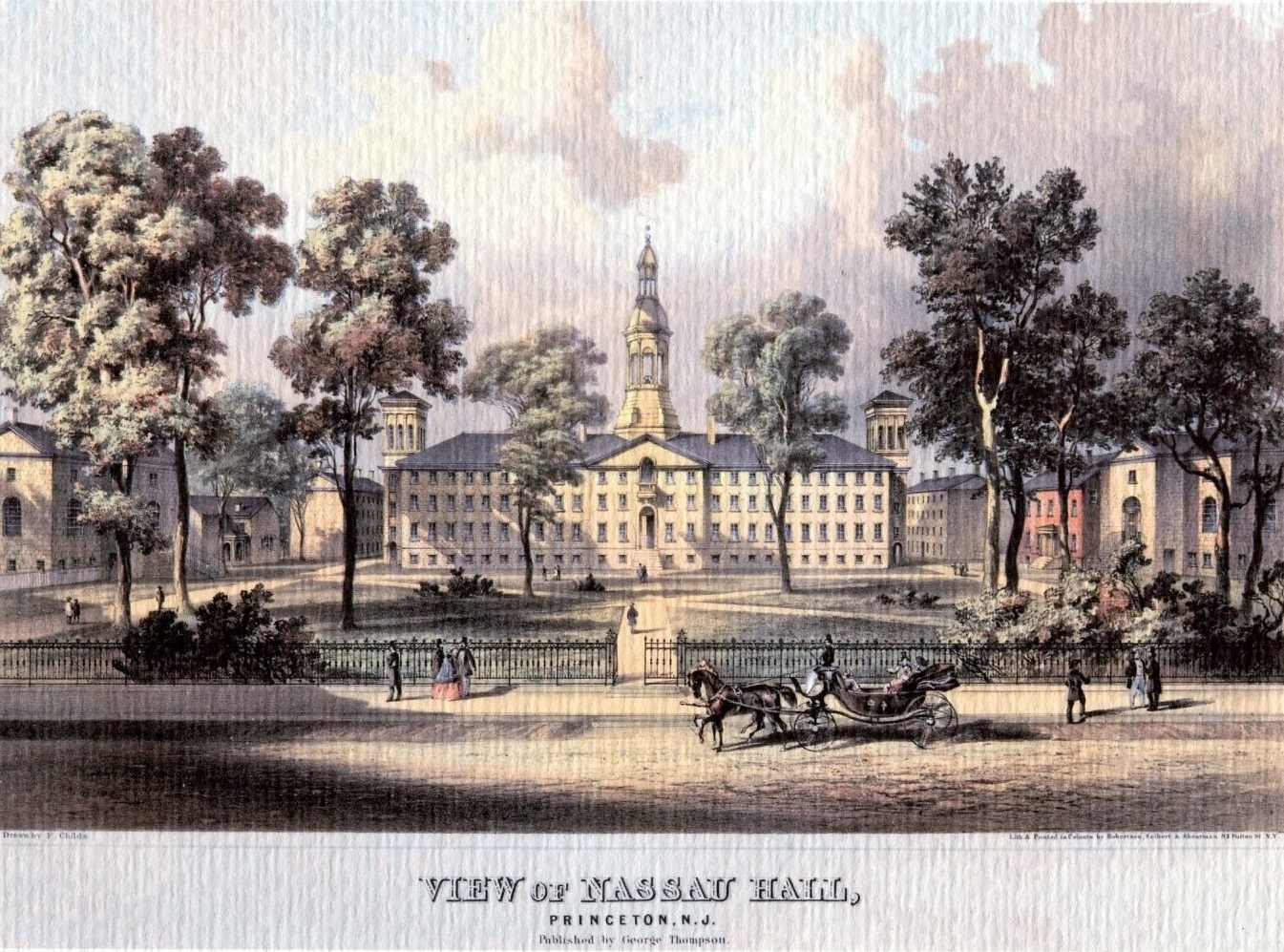In this week’s installment of our ongoing series bringing you the history of Princeton University and its faculty, students, and alumni, an alum takes the school flag to the moon, Ella Fitzgerald performs, and more.
November 17, 1983—Diplomats from the Netherlands, France, Spain, and Great Britain are in Alexander Hall to commemorate the bicentennial of the signing of the Treaty of Paris, which ended America’s Revolutionary War. Princeton is chosen because the Continental Congress resided here in 1783.
November 19, 1969—Astronaut Charles “Pete” Conrad, Jr. ’53, third man to walk on the moon and Commander of the Apollo XII mission, brings a Princeton flag to the moon’s Ocean of Storms. Princeton President Robert F. Goheen observes that this is “a noble summit for the Orange and Black,” and Dean of the Faculty J. Douglas Brown orders Princeton’s rarely-flown flag to be raised atop Nassau Hall in honor of the occasion. The flag is typically flown only for Commencement exercises, or at half-staff upon the death of a faculty member.

November 20, 1936—A teenager from Harlem performs at Princeton for the first time as the featured vocalist at a dance in the old gymnasium. At the 1990 Commencement exercises nearly 54 years later, Princeton will award the woman—Ella Fitzgerald—an honorary Doctorate of Music.

November 21, 1933—A self-described “most desirable, good-looking northern girl, unfortunately stranded in the South” writes to the Daily Princetonian asking for a “most desirable, good-looking northern Princetonian” with whom to correspond. “Hurry up before I weaken,” she says. “I am in demand here.”
For last week’s installment in this series, click here.
Fact check: We always strive for accuracy, but if you believe you see an error, please contact us.

One response to “This Week in Princeton History for November 17-23”
[…] For last week’s installment in this series, click here. […]